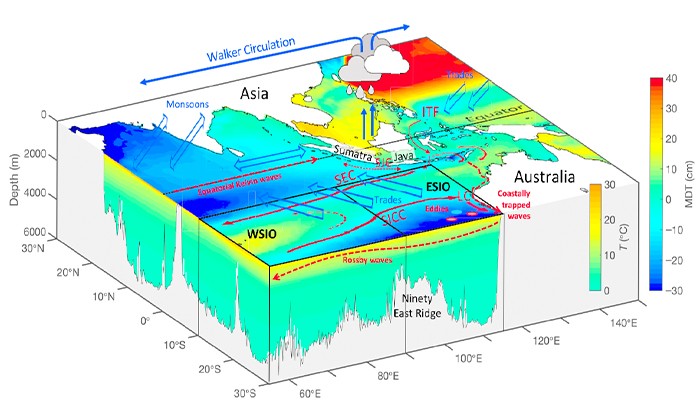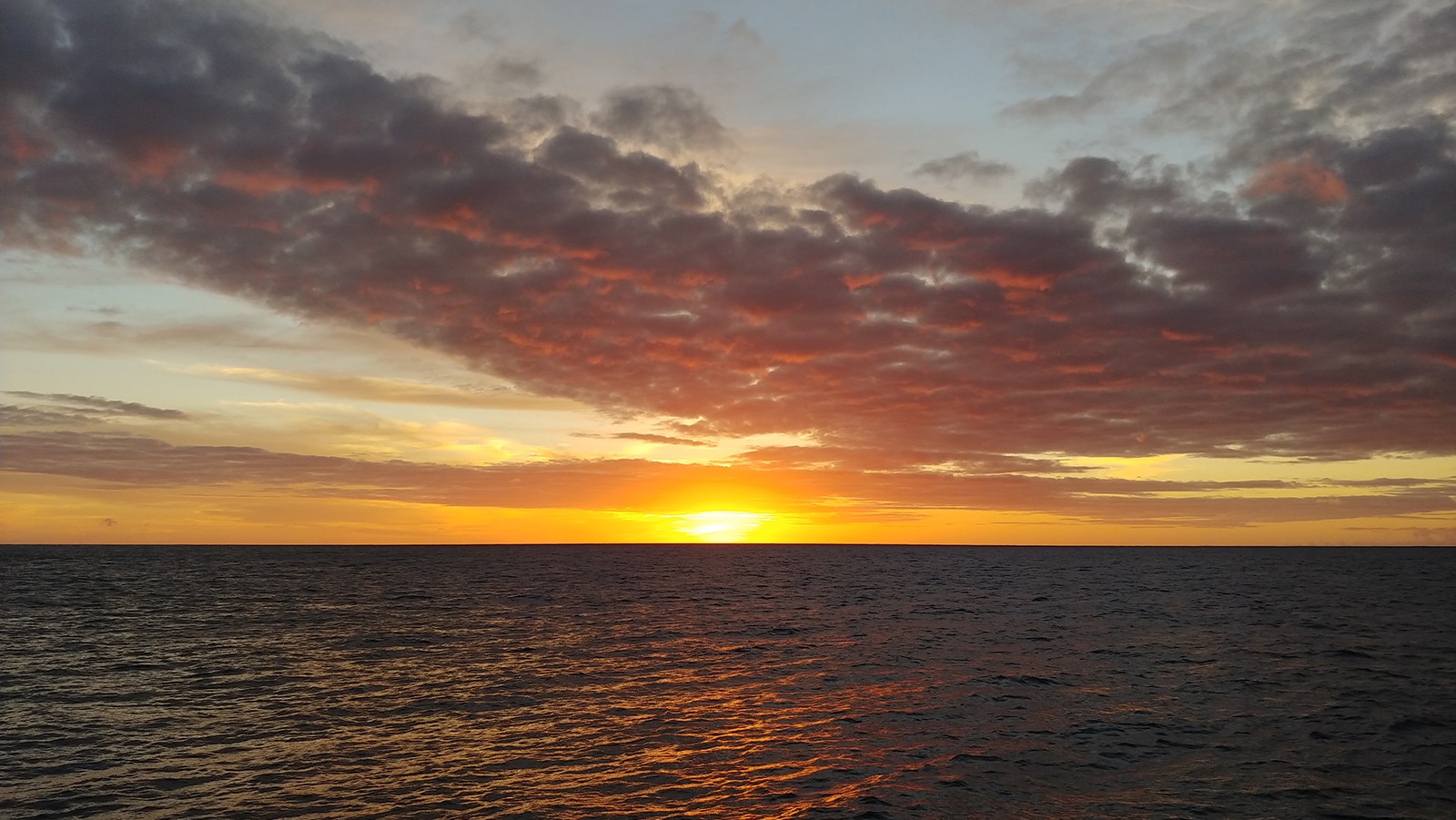In a recent study published in Science Advances, a team of scientists at AOML led by Denis Volkov used observations and idealized model simulations to explore what caused the abrupt reduction and ensuing recovery of the South Indian Ocean heat and sea level in 2014-2018.
The study showed that the 2014-2016 El Niño, the warm phase of the El Niño-Southern Oscillation (ENSO), contributed to the observed cooling of the southern Indian Ocean. This occurred through an unusual combination of both the reduced heat advection from the Pacific and the basinwide cyclonic wind anomaly that led to an upwelling of cold deep water. The study also found that the southern Indian Ocean heat content was nearly restored during the 2017-2018 La Nina, which is the cold phase of ENSO. The recovery of the heat content was mainly forced by an anticyclonic wind anomaly associated with stronger trade winds that led to the upper-ocean warming in the interior of the southern Indian Ocean and the suppression of the 2014-2016 cooling signal.
The ocean absorbs about 93% of the excess heat accumulated in the Earth’s climate system, with the subtropical southern Indian Ocean being one of the major heat accumulators among the oceanic basins. Observations showed that a decade-long basinwide warming and associated sea level rise in the southern Indian Ocean ended abruptly with an exceptionally strong cooling anomaly during the 2014–2016 El Niño.
The interannual-to-decadal variability of heat content and sea level in the southern Indian Ocean is strongly influenced by its connection with the Pacific and large-scale climatic forcing in the Indo-Pacific region primarily associated with ENSO and Indian Ocean Dipole.

The ENSO effect on the southern Indian Ocean heat content is twofold. First, ENSO drives changes in the upper-ocean heat content in the western equatorial Pacific and modulates the advection of heat into the southern Indian Ocean via the Indonesian Throughflow (ITF) – the “ocean tunnel” effect. The Indonesian Throughflow is an ocean current that provides a pathway for a constant supply of warm water to move from the Pacific to the Indian Ocean. Second, changes in local wind forcing influence the upper-ocean heat content in the southern Indian Ocean, and they are also related to the ENSO by the means of the Walker Circulation – the “atmospheric bridge” effect. The Walker Circulation is a conceptual model of the air flow in the tropics in the lower atmosphere (troposphere) and is shown in figure 1.
The results of the study showed that the 2014-2016 El Niño contributed to the cooling of the southern Indian Ocean through a combination of the reduced heat advection from the Pacific and the basinwide cyclonic wind anomaly that led to an upwelling of cold deep water. The results presented highlight the complexity of the southern Indian Ocean heat content variability driven by the ocean tunnel and atmospheric bridge effects and their interactions.
For future work, the research team aims to explore how the 2014-2016 cooling in the southern Indian Ocean affected the amount of heat transported from the Indian Ocean to the Atlantic Ocean.
